This post may contain affiliate links. Please read my disclosure.
Hi. I’m Julie and I’m a knife n00b. Sure I have a knife set I bought at Target on sale and I know how to use a knife, but I never really knew how to treat them the right way. There are lots of things you can do to make the most of your knives and help them last. And I don’t know about you, but my knives are one of the most used tools in my kitchen. I’ve not always done right by my knives. However, now that I know what I should be doing, I’m mending my ways and I hope you will too. Today I’m going share how to properly care for knives.
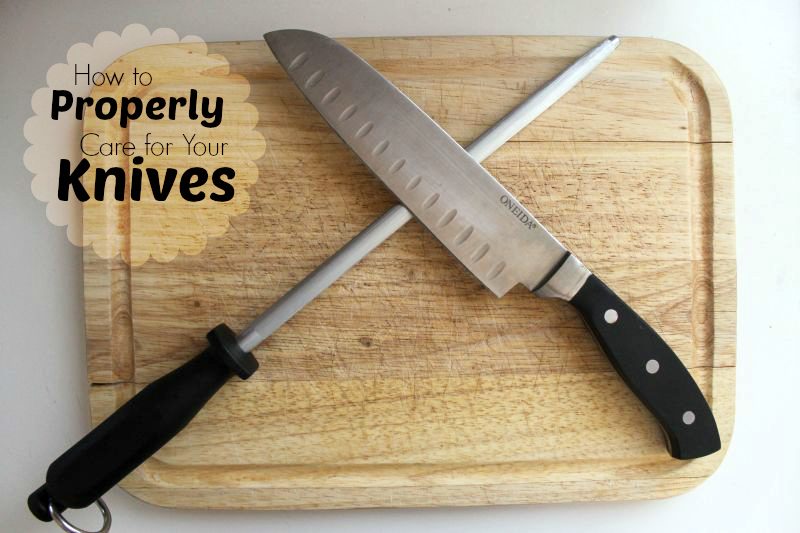
First things first. Get a good set of knives. Those cut-through-a-tin-can knives on TV are junk. Their edge is like a hack saw and once the serrations are gone the knife is done – it won’t be able to cut anything. These do-it-all knives are also usually unbalanced and make it hard to handle them properly. We don’t’ need any finger tips in the salad if you know what I’m saying. Good knives are worth the money and will last. Even knife sets are fine, but you want to make sure you getting quality not just a “good deal.” So once you have some knives worth taking care of, what do you do?
Basic care is a biggie. You want to make sure you are hand washing your knives. DO NOT, I repeat do not put your knives in the dishwasher. They can get banged up, then edge can get nicked, and the handle could possibly be ruined. Keeping the knife’s edge away from unnecessary contact with any surface is good for your knife – hence no dishwasher. Can’t have your sharp little beauty banging around with the forks and spoons or on the top rack of the dishwasher. You can either towel or air dry your knives. Just make sure they are completely dry before putting them away.
There a few options for storing your knives safely and in a way that will protect the knife’s blade. Option 1 is a magnetic rack made for knives.
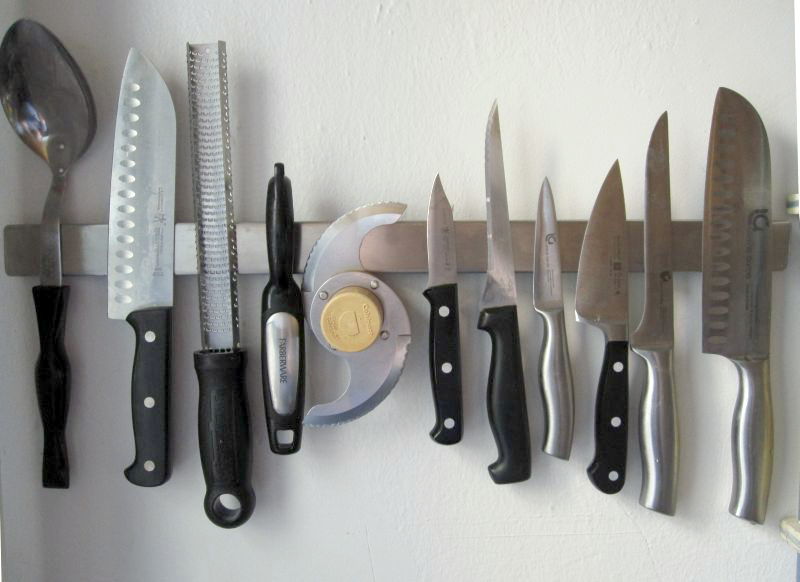
Option 2 is a knife block. With this option you really need to make sure your knives are dry or the wood can get wet which leads to mildew, mold, and so on. Not good for your knife, your food, or you.

Option 3 is using knife inserts for your kitchen drawers. These racks keep the knife secure and from bagging against other surfaces or objects while keeping the blade secured.
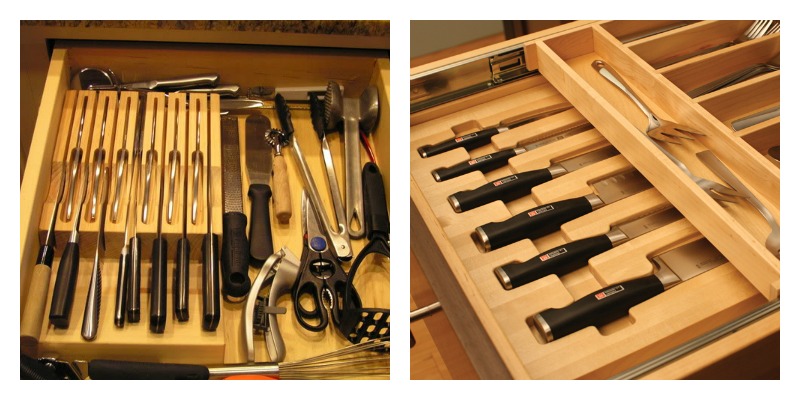 Washing and storage done, but this is only one part of the care equation. Since you use your knives to slice, dice, and julianne your way to dinner, it’s important to make sure your using a knife friendly cutting surface as well. This is pretty cut and dry (ha!). Wood and plastic cutting boards are good. Everything else – marble, metal, granite, composite counter tops, etc – is BAD!! Oh and glass cutting boards are “Dark Lord of the Sith evil”…as Alton would put it. Wood and plastic give and don’t fight your knife’s edge. This in turn helps to keep the edge from folding and getting nicks. My husband had a glass cutting board from many years back, and I may have “accidentally” broken it during out last move for above reason. Oops.
Washing and storage done, but this is only one part of the care equation. Since you use your knives to slice, dice, and julianne your way to dinner, it’s important to make sure your using a knife friendly cutting surface as well. This is pretty cut and dry (ha!). Wood and plastic cutting boards are good. Everything else – marble, metal, granite, composite counter tops, etc – is BAD!! Oh and glass cutting boards are “Dark Lord of the Sith evil”…as Alton would put it. Wood and plastic give and don’t fight your knife’s edge. This in turn helps to keep the edge from folding and getting nicks. My husband had a glass cutting board from many years back, and I may have “accidentally” broken it during out last move for above reason. Oops.
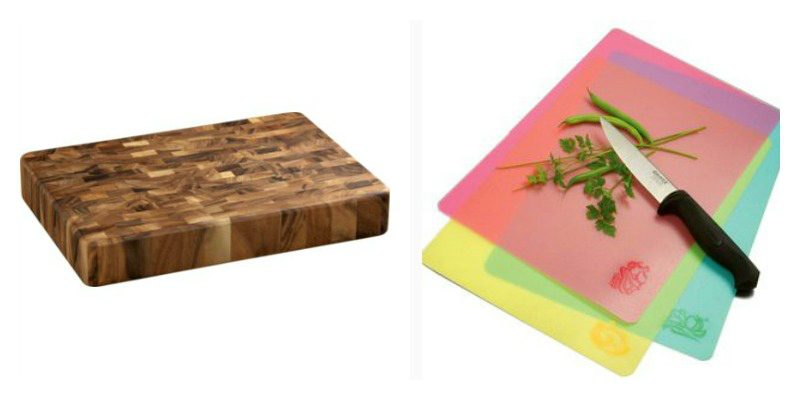
Also, don’t scrape your knife blade along the cutting board. I am notorious for this. I use my knife to help pick up finely diced foods or to push chopped potatoes into the pot. No matter what the reason, this action is not the cutting motion the knife is made for and is unnecessary surface contact that can damage the blade. So break yourself of this habit. (I’m trying hard.)
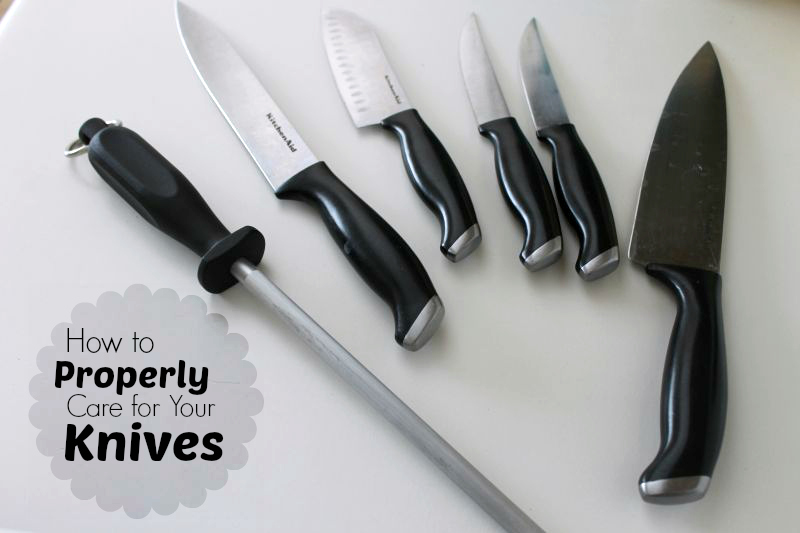
Most commercial knife sets come with a honing steel. For the longest time I thought I knew what to do. I saw people on TV running a knife blade down the steel and figured it was as simple as that. No proper angle or number of times. Just a few swooshes and you’re set. Nope. The ideal way to hone your knife is to run in from heel to tip in one smooth motion at a 15 degree angle. Yeah, I’m not a compass, so the best way to know if you’re doing it right is that you’ll feel a little friction with the steel. It’s hard to explain, but when you try it, you’ll know. You want to make 5 strokes on one side of the blade, 5 stroke on the other side, and then 2 stroke on each side of the blade. Done.

Honing will help realign folds in the steel. But if you have serious nicks, or honing isn’t making your knife sharp again, it may be time to sharpen the blade. The difference here is that sharpening your knife actually removes some of the metal and creates a new surfaces; honing just straightens the blade back out. Years ago sharpening was only done by professionals, and you can still have your knives professionally sharpened. But now, there are also a number of electric and manual knife sharpeners you can buy. I lucked out and got our friend’s knife sharpener a couple weeks ago.
I took my most offensive knife and ran it through the sharpener. I can’t even cut into an orange with this knife. Have to stick the pint in to break the peel, and if I’m lucky after a few passes it would cut into the fruit. I was horrible about honing my knives and had never sharpened them. If you’ve never use an electric sharpener, here’s the deal.
- Pass your knife through the sharpener, once in each of the levels. My sharpener has a level 1 and 2. This will give you a feel for how the knife will slide when the sharpener is on. You want to set the knife in the guide as close to the handle as possible, and pull the knife through raising the handle as you pull a little to match the shape of the blade.
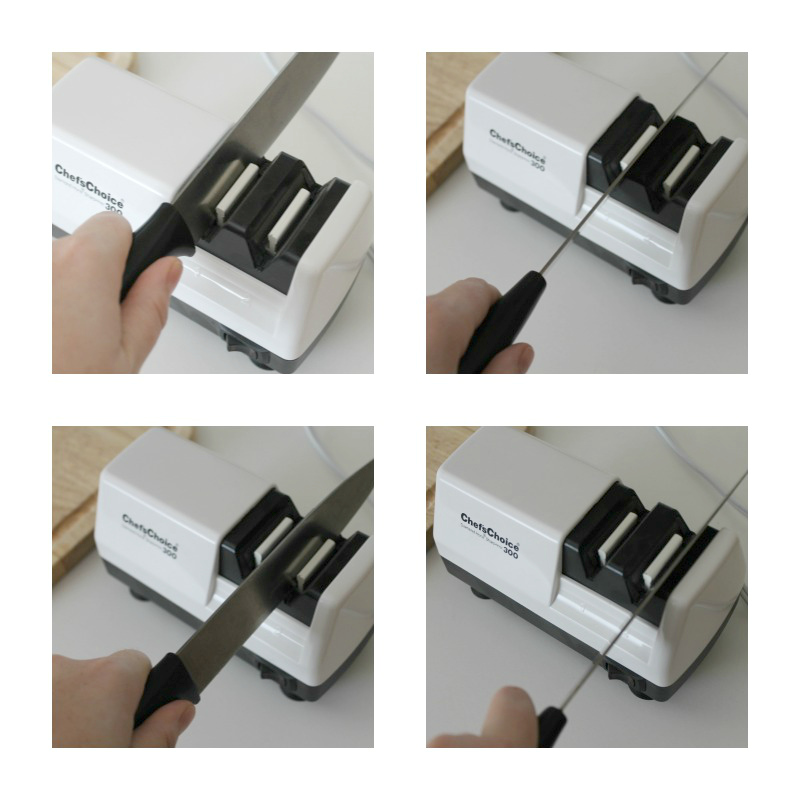
- Turn on the sharpener. Pass your knife through the left angle of the level 1 grinder, then the right angle of level 1. Repeat.
- Pass the knife through the left angle of the level 2 grinder, than the right angle of level 2. Repeat.
- If you have a level 3 you’ll pass it through the left and right angle one time each.
- If the knife still does not have a sharp edge, pass it through level 2 again (and then level 3 if you have it).
To check the sharpness, run you finger along the flat surface of the knife blade from the spine (big dull edge) toward the sharp edge. DO NOT run your finger down the sharpened edge. Blood cleanup is not one of the steps. Once your knife is sharpened, wash it to remove any residue, and get to slicing!

Properly cared for knives can last decades. Spending a little more money today on a good knife and putting in the effort to care for it properly will save you money in the long run. It will make you happier in the kitchen. It was night and day using my step-dad’s knives and then coming home to my own sad knives. It’s worth it, I promise. I’ve seen a huge improvement in my knife skills and cooking time after sharpening my knives and doing right by them.
You can also find Julie at:

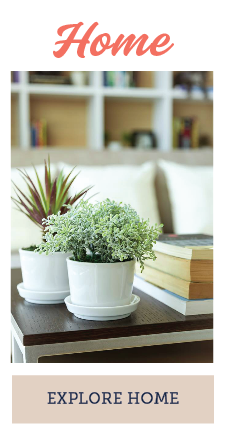


For a casual user of a good knife, using a sharpening steel every week should be sufficient. If you are using the knife a lot then sharpen the edge with honing steel every now on then. Actually an angle of 15-25 degree is just about right. To get an estimate of the angle of the blade, hold the blade and bend the blade half way to make a 45 degree angle, then bend it half way further to make a 22 degree angle.
This is a fantastic guide. I am notorious for pushing food around the cutting board with the edge of the knife blade. I just can’t help it but I’ll be thinking about it the next time I am cutting up some onions. I know a few of my friends have ruined their knives by putting them in the dishwasher. So Tragic!
Thanks, Billy
That was all a good tips! Taking care of your knifes is very essential because you will use it in your everyday cooking. Helpful post!
Also, as my Dad always taught me, when they’re in a knife rack, put them sharp edge up! If their weight is on the sharp edge, they dull more quickly.
Thanks for all the helpful tips. I have never known how to sharpen the knife with the tool thingy that came with them. The electric sharpeners look nice though and a fast way to keep knives working good as new.
Great info! I just bought my first set of professional knives and this is really useful. Thx!
All great tips! I haven’t sharpened my knives in so long!
Great tips – I admit I’m not always the best!!
Thank you, now I know how to do this and do it right. Just got to practice and get more good knives. How about the ceramic knives are they worth the money. I like the one I have but have noticed it is not cutting so good anymore. Can I sharpen it?
Hi Jackie. Ceramic knives can’t be sharpened with home sharpeners – they need to be sharpened with something harder than ceramic and there’s always a chance the blade could break. They need to be taken to a professional or setn back to the manufacturer for sharpening. I’ve seen mixed reviews on ceramic knives. Some people love them, others say they need to be sharpened too often and it’s not worth the after purchase investment. I don’t personally have one, so I can’t weigh in. I hope this helps.